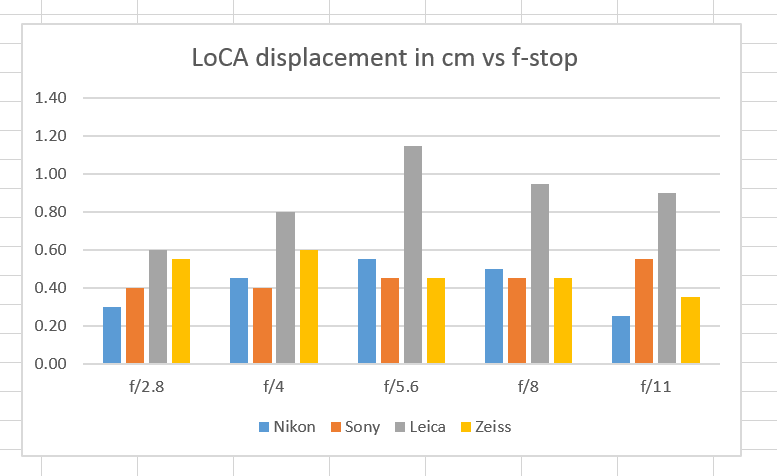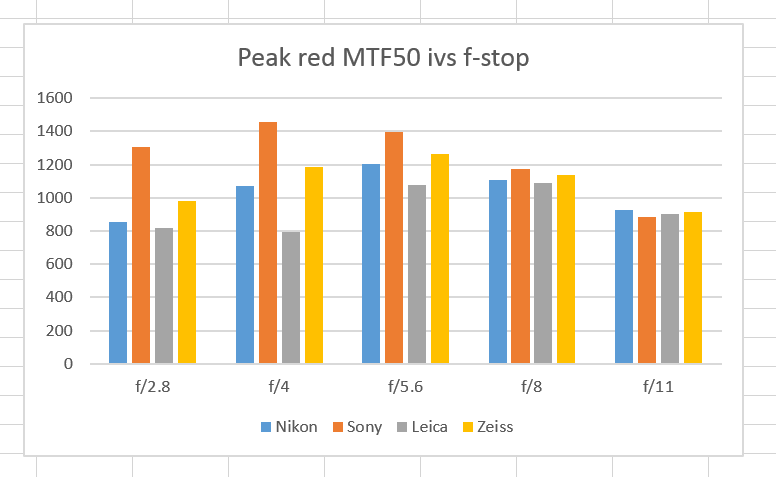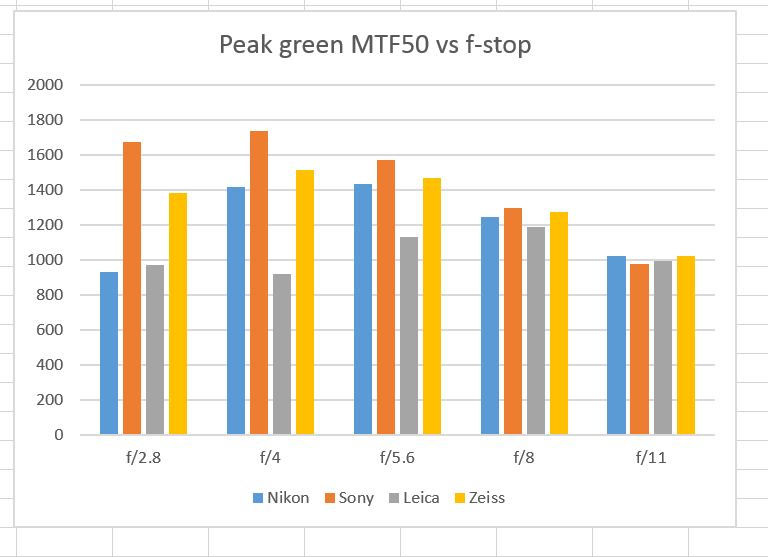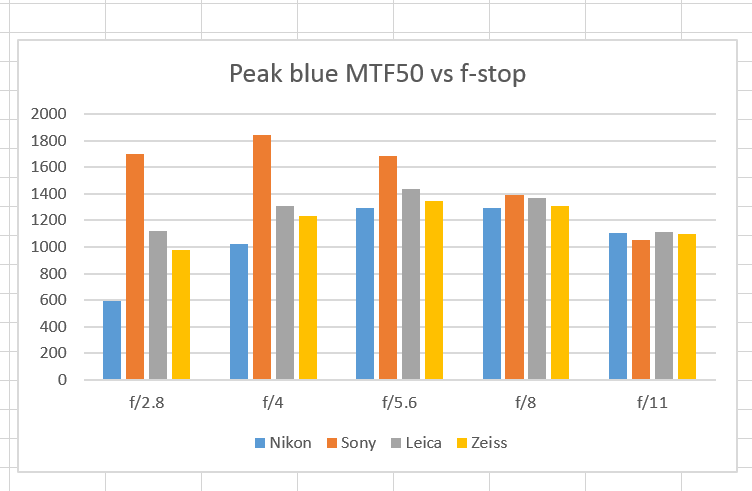This is a continuation of testing of the following macro lenses :
- Sony 90mm f/2.8 FE Macro
- Leica 100mm f/2.8 Apo Macro-Elmarit-R
- Zeiss 100mm f/2 Makro-Planar ZF
- Nikon 105mm f/2.8 Micro-Nikkor G VR
The test starts here:
I’m going to attempt to summarize the LoCA and sharpness measurements of the last few days. I won’t be summarizing the focus shift issues except in the most general way. I’ll deal with that last, so be patient.
If you haven’t read the results of the studies that I’m summarizing, I encourage you to follow the link above and do so. Otherwise, you may draw the wrong conclusions from this post.
I calculated the worst spread of the individual raw channel MTF50 peaks for the four cameras, and here’s what I came up with:
Keep in mind that the spread become less important as the lens is stopped down, since the LoCA is obscured by the depth of field.
It’s clear that the Leica Apo Macro is the worst. It’s interesting that that’s the only lens in this test with the magical word “Apo” in its name, and yet it does the worst on the acid test of what we might term apoism.
It’s not easy to pick a winner among the rest, but let me give you a guided tour. First, let’s ignore the f/8 and f/11 entries, since the DoF will probably make them unimportant. The Nikon is the best at f/2.8, and the worst at f/5.6. The Sony is the most consistent performer, and is the winner at f/4 and f/5.6. I’m gonna give it to the Sony, but I don’t think that LoCA is a reason to decide among those three lenses.
Now let’s look at the peak MTF50 in each raw channel:
At f/8 and f/11, you could throw a blanket over all the lenses; diffraction has made them all essentially equals.
The Sony is the clear winner at the other f-stops, with the Zeiss in second. The Nikon is right on its heels except wide open in the blue channel.
The Leica is last. Keep in mind that I know from experience — but not, I admit, at 1:2 — that the Leica is an excellent lens. Do we have another instance of Leica lenses performing well and measuring badly, like with the 90mm Apo Summicron (another Leica lens with those magic three letters in its name)? Time will tell; there is more testing to come.
Here are the broad strokes on focus shift:
- The Leica has a lot of it, and you should make sure you focus at taking aperture.
- The Nikon is quite good. You can get away with focusing wide open in all but the most critical of situations.
- The Zeiss is a little behind the Nikon, but can still be focused wide open most of the time.
- The Sony is amazing. Feel free to focus wide open.
For details on focus shift, be sure to look at the curves associated with the post on each of the lenses.
Keep in mind that this was all done at 1:2 magnification. We saw a month ago that the Sony had greater focus shift at 3 meter subject distance.




The Sony looks like an outstanding lens and easy winner at these short distances.